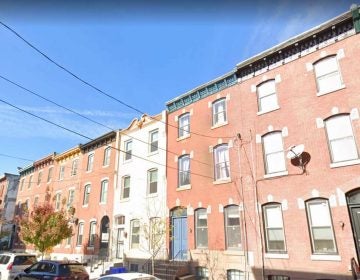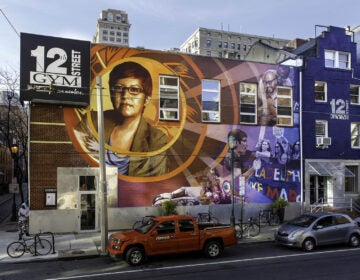Out with the old, in with the old: Will Mayor Kenney take a new approach to preservation?
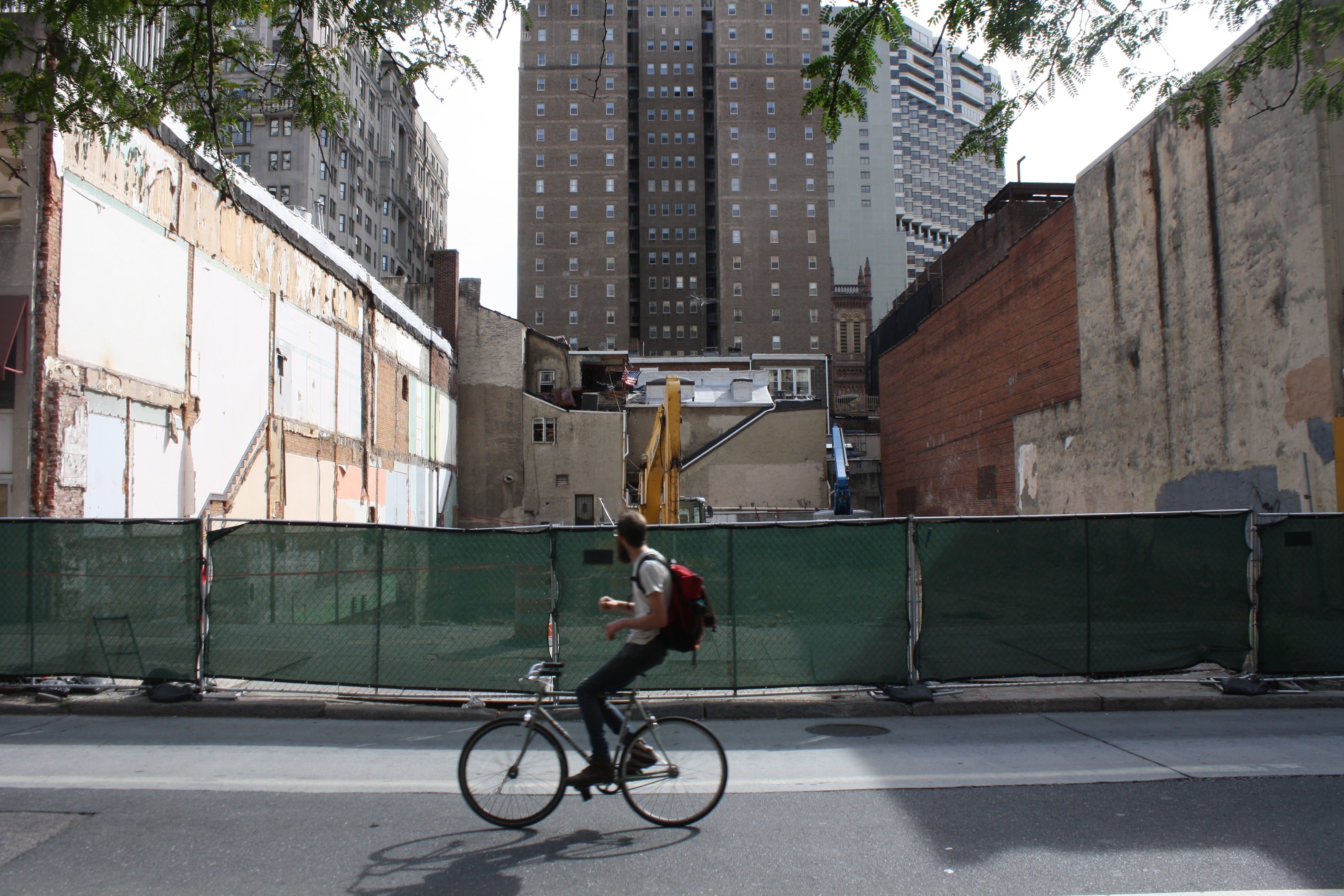
PlanPhilly is taking a look back at Philadelphia during the Nutter Years and down the road at what we might expect from the Kenney administration. Here’s the first installment in this occasional series:
It was deep into the 2015 primary election season, a three-month hellscape of interest-group forums, and Jim Kenney, like the five other candidates hoping to become Philadelphia’s next mayor, was going through the motions.
The forum of the day concerned development and planning, and candidates were dutifully reciting answers to pre-submitted questions about tax policy, land banking, and reforming the perpetually scandal-ridden Department of Licenses and Inspections. The night before, at one of the season’s only televised candidate debates, fellow candidate Lynne Abraham had abruptly lost consciousness and collapsed to the ground, but Kenney seemed to be the one struggling to come to.
He had arrived somewhat late to the morning’s forum, which was co-hosted by PlanPhilly and held at the National Museum of American Jewish History in Old City. He appeared to be laboring to wake up. Then, about an hour into the discussion, he told a story, and his face regained some of its characteristic flush.
“A number of months ago I became aware of the fact that the owner of a historic synagogue on south 6th Street, 6th and Bainbridge, felt the need to jackhammer off the Star of David from the building,” Kenney said. “And it really pissed me off. To the point where I said, ‘You know what? Who are you to denigrate not only this historic building but to take away its character?’ And I called the Historical Commission and I learned that it wasn’t on the city register. It was on the national register and it was on the state register but it wasn’t on the city register, and we had no ability to do anything about it.”
LEGACY IN DISPUTE
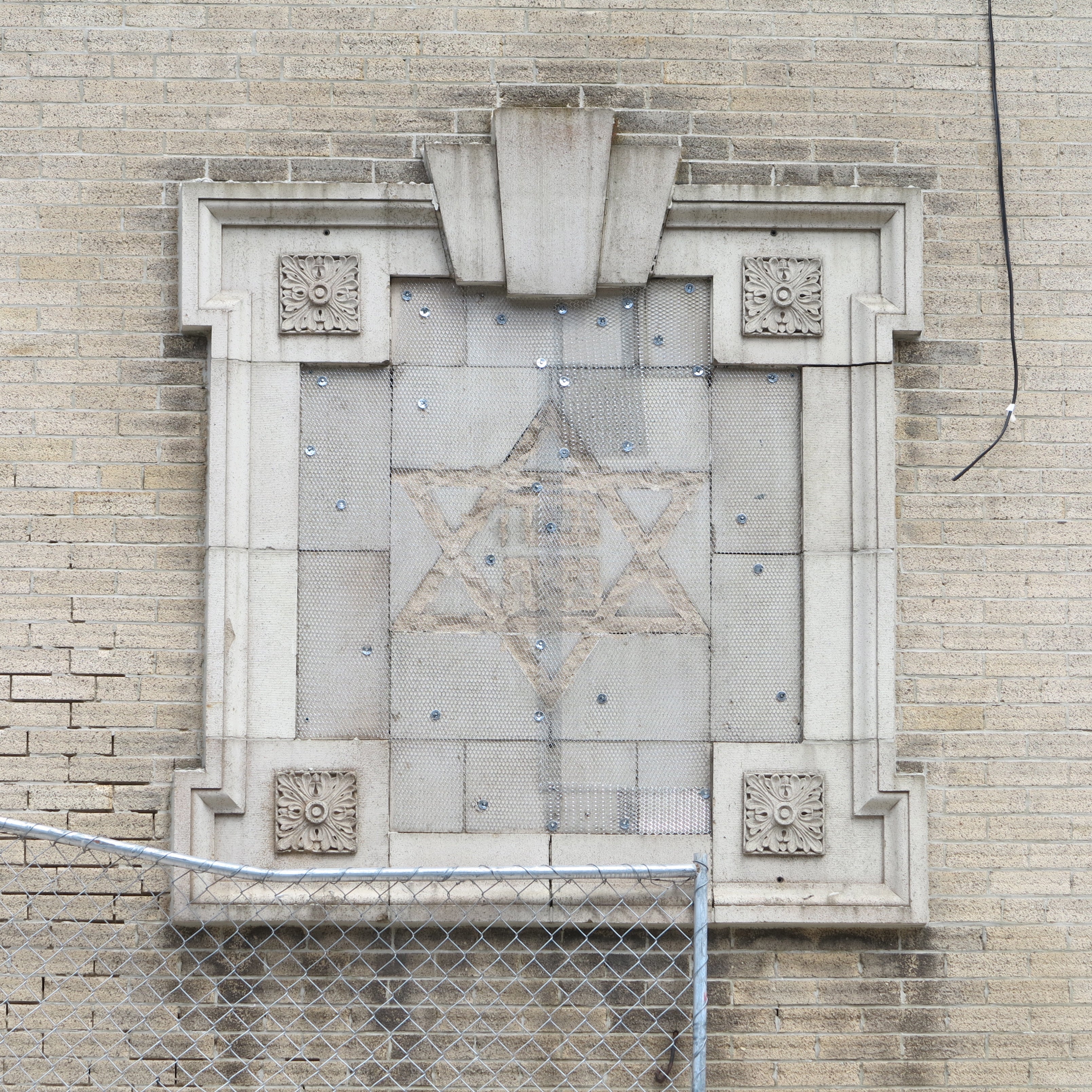
As Michael Nutter’s tenure as mayor comes to a close, it’s easy to find stories about Philadelphia’s resurgence, its growing appeal to young people, its suffering public education system, and the depth of its poverty. Nutter’s legacy will be built on these issues. But over the last few years, there’s also been a growing conviction among some preservationists that, in rolling out the welcome mat to developers, the Nutter administration has allowed preservation concerns to languish.
In April, the Inquirer published an op-ed by Aaron Wunsch, a preservation professor at PennDesign, and Caroline Boyce, director of the Preservation Alliance of Greater Philadelphia.
“Maybe you live near 40th and Sansom, Marlborough and Belgrade, Third and Moyamensing, or Ninth and Cambria and have watched the demolition of an elegant stone church,” they wrote. “Maybe you live in Roxborough and have seen Victorian mansions disappear. Or maybe you follow the work of photographers such as Vincent Feldman and realize that just about every part of our city is rapidly surrendering the sorts of local landmarks other municipalities strive valiantly to save.”
Wunsch has been among the primary proponents of this narrative, even going back and forth with Jon Farnham, the Historical Commission’s director, on this website. But he’s hardly alone. The narrative has been strengthened by Inga Saffron, the Inquirer’s architecture critic. On this website, too, preservationists, including my boss Ashley Hahn, have decried the Nutter administration’s performance, saying that preservation has been unduly shunted in favor of development during his tenure.
“It’s a fairly wide-held belief,” said Patrick Grossi, the director of advocacy for the Preservation Alliance who has—full disclosure—been a friend of mine for a number of years. “It just is. I’m not saying I agree with that belief wholesale … But there is a wide-held belief that [Nutter’s people] are basically turning their heads while the city is demolished into the future.”
Top officials who deal with these issues seem to be deeply bothered by this idea. They also claim that it’s false.
UNDERFUNDED MANDATE
That Philadelphia’s Historical Commission is underfunded relative to the preservation operations of other major U.S. cities is not in dispute. Baltimore, a city with less than half the population of Philadelphia and only ⅔ of the land area, dedicates more money to preservation than Philadelphia does. Philadelphia’s operating budget is eight times larger than that of New Orleans, and yet the Crescent City’s preservation apparatus has twice as much money as Philadelphia’s. So does the Historic Preservation Office of Phoenix, a sprawling place not well known for its historic architecture. Nobody with an interest in preservation argues that our commission wouldn’t benefit from some more funding.
“I think the Historical Commission is underfunded when it’s compared to cities of similar size in the United States, other preservation agencies,” said Jon Farnham, the director of the Commission. “We’ve done some analyses and determined that it’s funded at a level maybe half to a third of what comparable cities fund their preservation agencies. But Philadelphia is a special case, and there are lots of legitimate public needs behind scant resources, so we understand why the Historical Commission’s budget has not been increased over the last couple of decades.”
Philadelphia’s Historical Commission gets by on $419,781 a year, an allocation that’s risen by only a few thousand dollars since Nutter took office. Nutter’s latest five-year plan envisions a Commission staff of no more than six employees through 2020. Only three of the Commission’s six current employees are preservation planners, qualified to work on nominations and surveying. Farnham said the Commission would be in a much better place with 8-10 planners.
“We don’t have the opportunity to do much internal planning in the office these days because we’re all busy generating minutes from meetings and stamping building permit applications,” Farnham said.
Farnham declined to field questions about whether he’d directly lobbied the Nutter Administration for more funding.
“We’ve had ongoing conversations about better funding for the Historical Commission,” said Alan Greenberger, Nutter’s deputy mayor for economic development. “It’s not like it’s not known out there. The economic climate has been such where that’s not been possible. And people might say, ‘Well, look, it’s not a lot—it’s a small organization.’ Yeah, it’s a small organization. But there’s no design to not enable it.”
OFFICIAL PERSPECTIVES
One afternoon last December, a few days before Christmas, I carried myself up to a windowless fifth-floor room in City Hall where the Historical Commission holds its committee meetings. The Commission’s committee on financial hardship was scheduled to consider a very narrow issue related to the historic mansion at 40th and Pine streets that was demolished earlier this year. The agenda was not going to be of very much interest, but I’d already been to more than a dozen hearings related to the mansion, so I figured I should stick with it.
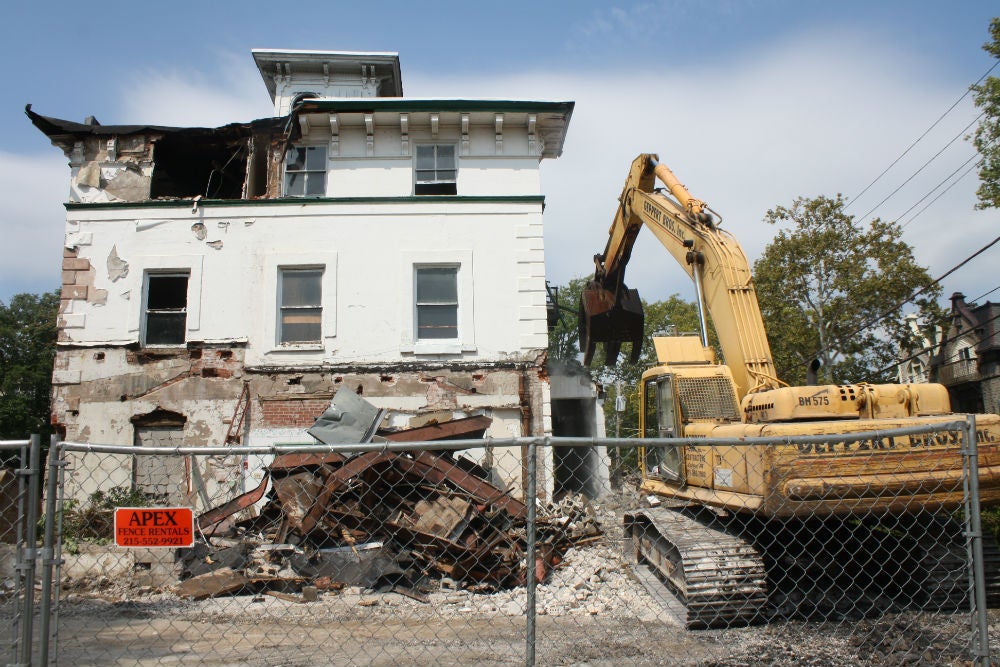
A few minutes before the hearing was supposed to start, Jon Farnham emerged from his office in an adjacent room. Farnham has worked for the Historical Commission since 2003. He was appointed interim director of the Commission when his predecessor, Dick Tyler, retired toward the end of Mayor John Street’s tenure. Nutter appointed Farnham to the position on a permanent basis shortly after taking office, in 2008.
Farnham, emerging from his office, looked sort of ashen, which isn’t altogether unusual. I said hello and asked how he was doing. He paused for a moment.
“I’m still reeling from Inga’s column this morning,” he said.
I hadn’t read the column yet, but it turned out to be about the Boyd Theater, which had been marching slowly toward death for Nutter’s entire term in office, and which the Commission finally approved for demolition in 2014.
“In most cities, historic designation means a building is protected – forever,” Saffron had concluded. “In Philadelphia, designation is increasingly seen as a temporary state, good until a developer offers a compelling alternative.”
Jon Farnham has a restrained demeanor, sometimes bordering on timidity. He uses his inside voice on every occasion. But he is also an obviously intelligent man who, I suspect, has a great hidden capacity for dark humor. Was the comment meant as a sarcastic scoff, or was Farnham actually that upset by the column? The comment stuck in my head for a number of months, until I was able to ask him directly how much he cares about what journalists say about the Historical Commission.
“It keeps me up maybe six of seven nights every week,” he said. “I worry a lot about it … I feel like [the Commissioners] have been unduly criticized, primarily by people who don’t understand the extent of the Historical Commission’s jurisdiction, don’t understand preservation standards, don’t understand preservation law. I think there’s this notion by some in the press that the Historical Commission should control all aspects of historic properties.”
A few weeks later I spoke with Sam Sherman, the civilian chair of the Historical Commission, who seemed equally bothered by the notion that the Commission is doing a poor job of protecting historic sites.
“If you read the papers, apparently we’re tearing down buildings every thirty seconds,” said Sherman, who is also the outgoing director of Passyunk Avenue Revitalization Corporation. Sherman got his start as a developer building what he now refers to as “ticky-tacky” in the suburbs.
Sherman has a specific grievance, too. In June, Inga Saffron wrote a piece about the Commission’s handling of an application for development at the Boyd property, saying, “Under the Nutter administration, the Historical Commission has come to see its role as smoothing the way for development.” Sherman wrote a letter to the editor disputing the implication. An Inquirer editor then removed all the criticism of Saffron and published a clipped version of the letter. The Commission posted the unedited version of the letter on its website.
“I’ll grant you, demolitions have been permitted on what would be considered high-profile cases,” Sherman said. “But they have been vetted, and it wasn’t like they were done in a vacuum. There was a process.”
HISTORY OF HARDSHIP
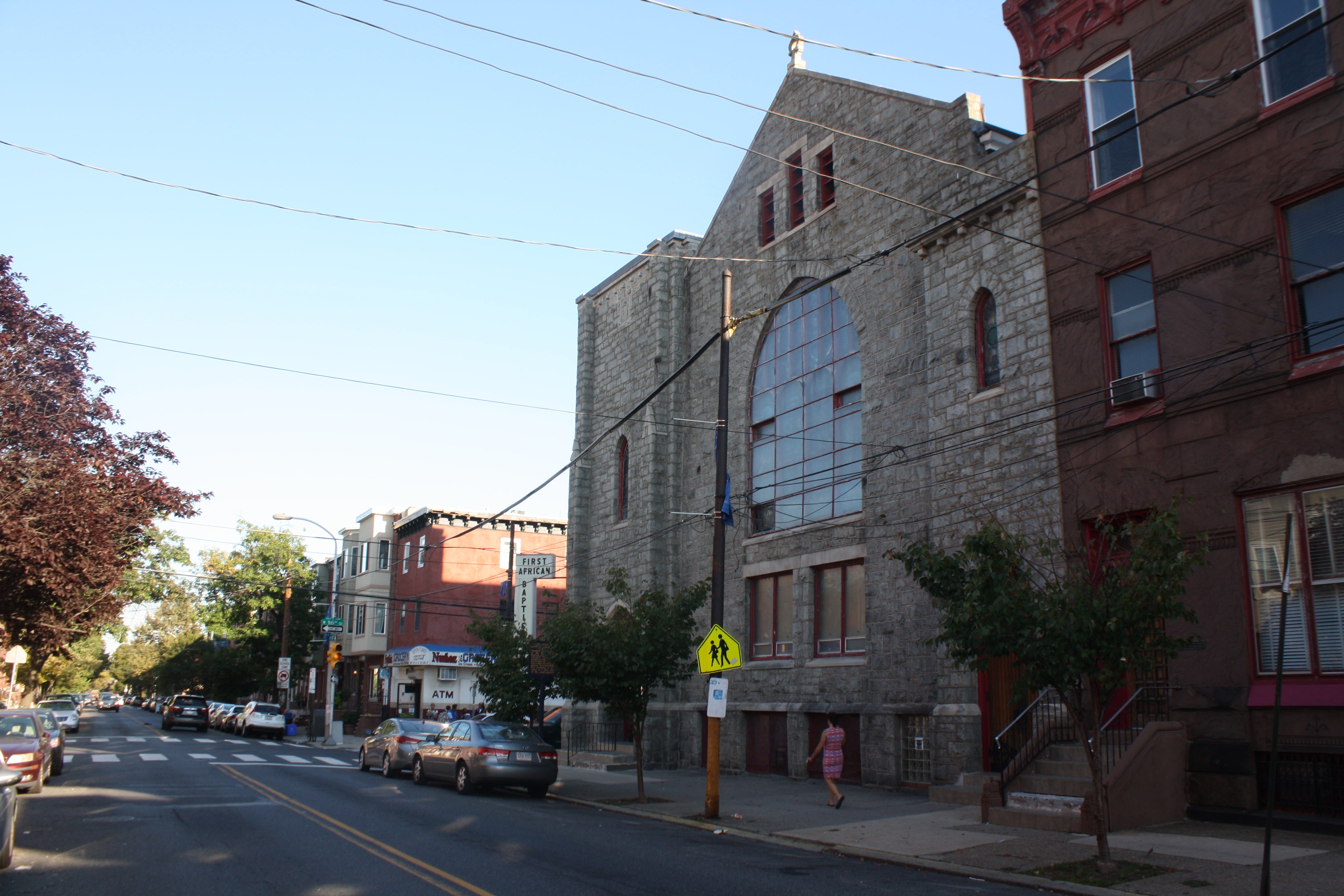
There’s an escape valve at the heart of preservation law: allowing historic buildings to be torn down in certain cases is what makes it legal for municipalities to protect them in the first place. Philadelphia’s preservation ordinance prevents owners from demolishing historic properties in all but a few circumstances. The Commission can permit demolition if it’s in the service of a legitimate public interest or if it determines that a property can’t be reused. The latter case, which is the most common claim of owners who are seeking to bring down historic sites, is called financial hardship.
Congress passed the National Historic Preservation Act in 1966, but modern American preservation law was born in the late 1970s, with the U.S. Supreme Court’s decision in Penn Central Transportation Co. v. City of New York. In that decision, the Court ruled that protecting historic properties was a legitimate governmental police power. Preventing demolition or major alteration of such a property doesn’t qualify as a Constitutional “taking” by a municipality unless it denies the owner every possible use of the property.
“… the submission that appellants may establish a ‘taking’ simply by showing that they have been denied the ability to exploit a property interest that they heretofore had believed was available for development is quite simply untenable,” the Court concluded.
Philadelphia’s Historical Commission was established in the 1950s, but its contemporary preservation ordinance wasn’t adopted until 1985. Among the Commission’s duties, as outlined in the ordinance: designating historic buildings and districts, maintaining an inventory of locally protected places, making recommendations about sites the city should acquire, and increasing “public awareness of the value of architectural, cultural and historic preservation.”
In Philadelphia, anyone can nominate a building for historic protection, with or without the owner’s cooperation. The Commission recently added First African Baptist Church to the local register over the objections of the church’s pastor, who is hoping to sell the property for development because it’s become too expensive for the congregation to maintain. If an owner wants to demolish the protected building, he or she will have to “demonstrate that the sale of the property is impracticable, that commercial rental cannot provide a reasonable rate of return and that other potential uses of the property are foreclosed,” according to the terms of the ordinance.
Hardship cases tend to be argued over that specific clause. I have personally sat through hours of testimony about the meanings of the words “impracticable,” “reasonable,” and “foreclosed.”
“I think that the Historical Commission has done an excellent job wrestling with some very difficult interpretations of the law,” said Alan Greenberger. “Their job is to apply the historic preservation law. It’s not to determine that every single building that somebody thinks ought to be preserved should be preserved.”
‘BASELESS’ THEORIES
Greenberger, who also serves as the city’s commerce director and chair of the City Planning Commission, has been the lead figure in a number of conspiracy theories that involve the Nutter administration intentionally throwing historic resources under the bus to make way for new development. Organizationally, the Historical Commission operates under Greenberger’s purview, and theoretically Greenberger could try to pull rank to get the results he wants. Naturally, he disputes these theories.
“The Mayor has never called me and said, ‘Hey, I understand this thing is going through the Historical Commission; I need this to come out this way.’ It’s never happened, because that’s just not who he is,” Greenberger said.
Jon Farnham, too, rejects the idea that the Nutter administration has systematically blocked preservation efforts.
“I’ve been at the Historical Commission since 2005, and there has never been, from the mayoral administration or City Council or anywhere else, any political manipulation of the outcome of Historical Commission decisions,” Farnham told me. “That’s not the way the system works.”
Farnham is a technocrat. He worked as an engineer in Boston for eight years before getting a master’s degree in art history at the University of Massachusetts and a Ph.D. in architectural history at Princeton. He is a bona fide expert, and when he speaks he is not duplicitous, in the way that some politicians are. And yet, during some of my conversations with him, I’ve had the sensation that the words he deploys are like children dressed up in tight-fitting Sunday clothes and packed against their will into the minivan on the way to church, while the words he’d rather be using are at home watching cartoons and eating cereal on the couch.
“I think it’s baseless,” he said. “Baseless is the best word to use for it. There’s no evidence that that has happened, and I think—not me personally—but a cynic might think that that’s a convenient excuse for the preservation advocacy community failing to hold up their end of the bargain.”
He continued a minute later, “I think we as preservationists—and I consider myself a preservationist and I consider every member of the Historical Commission a preservationist—the larger preservation community needs to look at why that narrative has had such traction, and look at itself and understand why what I consider to be essentially an excuse is used so often.”
BUILDINGS LOST, BUILDINGS SAVED
The outcry, such as it is, over historic buildings lost under Mayor Nutter has been focused on a few highly visible sites.
Chief among them is the Boyd Theater, a luxury cineplex built in the 1920s, a time when a certain sector of Philadelphia society engaged in a social ritual that has since disappeared from our culture: getting dressed up to go see a movie. The various efforts to reuse, redevelop, and preserve that theater are well-documented on this website and elsewhere. Suffice it to say, those efforts were unsuccessful. The Historical Commission ultimately determined that preventing the owner from tearing down the theater would create a financial hardship, and voted to permit demolition, which the owners began earlier this year.
The Commission has also been criticized for its hardship findings for the Church of the Assumption, which is still standing, vacant and in disrepair, at 11th and Spring Garden streets, and for a historic mansion owned by the University of Pennsylvania at 40th and Pine, which was demolished this summer.
But according to numbers provided by Jon Farnham, these three sites are virtually the only registered properties where the Commission has permitted demolition in the last five years. The Boyd was in fact the only historic property where a hardship application was approved in 2014. According to Farnham’s figures, the last five years have seen the lowest rate of demolition approval for historic properties—calculated as the number of annual demolition approvals per 10,000 historically designated properties—of any five-year period since the ordinance was adopted in 1985.
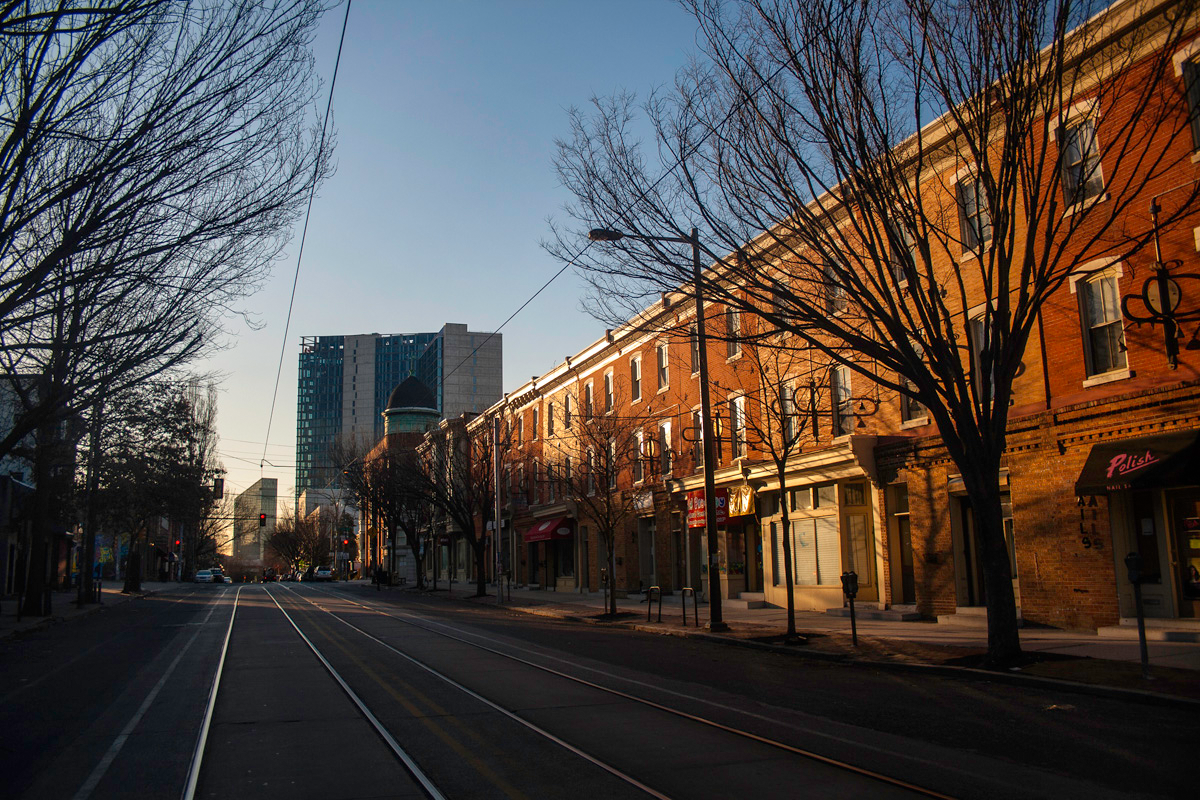
That’s only part of the story. During Nutter’s two terms, the Historical Commission has only managed to designate 64 individual properties and four districts, totaling 446 properties, to the local register. The City Planning Commission staff technically keeps an eye out for unprotected historic resources as it completes its Philadelphia2035 district plans, but the recommendations it makes are few, ad hoc, and rarely followed by nomination. No new historic districts have been registered since 2010, and the proposed Overbrook Farms district has been put on the shelf indefinitely, tabled a couple years ago at the behest of Alan Greenberger and District Councilman Curtis Jones, Jr.
In the meantime, huge swaths of the city are unprotected, and important would-be landmarks are being demolished. Three years ago, there was a one-of-a-kind stone church at the corner of 11th and Mt. Vernon streets, with mysterious nooks and odd shadows, that used to house a 100-year-old African Methodist Episcopal Church congregation. Now it’s a couple of tall-as-legally-permitted single-family rowhomes with the same faux bay windows you see on every new construction. Last year, another century-old church on a hill in North Philadelphia was condemned, demolished, and sold for scrap.
Perfectly intact, occupied rows are threatened as well. And iconic industrial buildings. And hospitals. Developers tear down and replace old rowhouses, the fundamental architectural threads in Philly’s urban fabric, while fixing them can be cheaper, less wasteful, and better for housing affordability.
In all, only two percent of Philadelphia’s buildings are designated historic, even though more than two thirds were built prior to 1945, according to a 2014 report from the Urban Land Institute. When unprotected historic buildings start to look like cheap land for developers, advocates and neighborhood residents often scramble to get them added to the register. As the city’s construction boom continues to grow, questions of preservation only become more urgent.
COULD KENNEY REINVIGORATE PRESERVATION?
An Inquirer reporter recently observed that Kenney “is arguably at his most effective when he sees an injustice he wants to remedy.”
One year ago, while he was still a City Councilman waiting patiently for Council President Darrell Clarke to decide whether he would run for mayor, Kenney introduced a bill that would have established a committee to nominate buildings already listed in the National Register of Historic Places for the local register, the only sites over which the city has any legal authority. Kenney, who has also worked for the local architecture and preservation firm Vitetta, resigned from Council before the bill could move forward.
While the bill had a fairly narrow purpose, it also included a bit of cash: it would have transferred $500,000 from the city’s grants revenue fund to the Historical Commission. That’s not much by overall budgetary standards, but it would have more than doubled the Commission’s annual budget.
“We’re in a position where the vast majority—pretty much all of the resources that the commission has at its disposal, all the staff—is dedicated to the review of building permit applications,” Farnham told me over the summer. “Very little work happens in surveying and designation generally, education outreach, and even in enforcement. We have to pick and choose our major enforcement cases very carefully, because they’re very time-consuming and labor-intensive and we have to be sure not to overreach.”
“I think I would explain to the next mayor what it is we can do with the resources that are currently allotted to us under the current fiscal-year budget and the five-year plan and explain what additional work we could do with additional resources.”
Some advocates hope more resources would not only improve the administration’s approach to preservation, but help city residents understand the value of it as well.
“The ordinance stipulates pretty clearly that part of the Commission’s charge is to be a public advocate for historic preservation, to provide education about what historic preservation means, what it can do, how it can play a role in your neighborhood, and to essentially be a liaison between the city and various neighborhoods to talk about their stewardship of historic buildings,” said Patrick Grossi. “They don’t really do any of those things.”
On the campaign trail, Jim Kenney sounded committed to the cause:
“I understand that there’s stress between development costs and preservation, but if you can come down on the side of historic preservation, this city will always have the character and identity that it has now, and we can preserve that,” he said at the spring forum. “… There are some properties that either can’t be saved or aren’t worth saving, and I understand that, but we need to have the technical expertise in the Historical Commission and the capacity and the help to make sure we determine which buildings are worth it and which buildings aren’t.”
A QUESTION OF PRIORITIES
As the next mayor, Jim Kenney is inheriting a city teeming with injustices. Why should preservation even rank?
For one thing, some might say, a remedy is relatively cheap, relatively simple, and long overdue. Kenney himself has already proposed something like it as a Councilman.
But what, I’ve been asking myself for a number of months, is the reason to care in the first place? When I close my eyes and picture a preservationist, I don’t picture the type of person who’s likely to be at the top of the mayor’s priority list. I don’t picture the downtrodden. I picture the type of person caricatured by The Kinks, or I picture someone disingenuously trying to save an old building because they don’t want to be bothered by new development. I picture somebody like this guy, a former hippie quoting John Lennon and Arlo Guthrie in the same breath. Somebody who is aligned with vaguely countercultural values by preference and disposition but not by lifestyle or tax bracket.
These stereotypes persist for me, even though they’re proven faulty every time I interact with someone who’s fighting to save an old building. But the stereotypes don’t matter. Ultimately, I think, it’s not about who preservationists are, but what they care about: how the city is built and how people interact with it.
“The totality of the physical environment of Philadelphia is—it’s certainly not unique. Boston, Charleston, other people have that, but there are lots of places that don’t have that,” said John Gallery, the former director of the Preservation Alliance and author of Philadelphia Architecture: A Guide to the City. “And I think that you could make an argument that that is one of Philadelphia’s three most important characteristics. I don’t know what the other two are.”
Gallery is first and foremost an aesthete, and if you are someone who values a beautiful environment, the importance of historic preservation is self-evident. For a thousand reasons, the buildings that are built today are almost uniformly less attractive, less detailed, less respectful of the streetscape, and made of cheaper materials than the buildings of the past. I might be on firmer journalistic ground if I ascribed that sentiment to someone else, but I feel fairly confident it will be accepted as non-controversial.
But aesthetic arguments aren’t going to triumph very often in our culture, certainly not when weighed against property rights. Nostalgia won’t get you anywhere worth going. There are well-documented economic and environmental benefits to preserving old buildings, but the closest thing I’ve heard to a core value of preservation is this: the built environment that we’ve inherited from the past both records and predicts patterns of human behavior.
“I think it’s really hard to explain why historic buildings are important, but I think they’re important because it’s almost as though they’re part of us,” Jon Farnham said to me. “They’re extensions of us. The environments in which we subsist in, I think, in a very direct, tangible way, control who we are. We act very differently in different environments. And I think we need to protect at least parts of our historical environment in order to function in a coherent and complete way.”
Later, I was talking with Patrick Grossi at Little Pete’s, the antiquated, window-clad Center City diner that is still operating under the darkening shadow of the wrecking ball, and he put it a different way.
“For me, history has become a kind of force of diplomacy. It’s become a way for me to initiate conversations with people who I maybe would never have otherwise initiated conversations with. It’s given me a greater appreciation of the city and the many Philadelphias that exist. It’s also—to go Fred Rogers on you a little bit, studying history has inspired me to be a much more diplomatic person, but also a much more understanding person. When you realize the complexities of the past, and how there are very few instances of moral clarity, it’s much easier for you to understand perspectives that may be in complete conflict with one another. And to defer judgment before you really understand where they’re coming from … And it’s a very nice counter to the Internet moral indignation that we experience on a day-to-day level.”
Philadelphians live in long rows of brick houses punctuated with bars and bodegas. Or they live in stone houses built of Wissahickon schist. Or they live in downtown apartment buildings and walk to 300-year-old parks. Or they live in sparse neighborhoods with driveways and front lawns. Or they live in project towers designed to concentrate poverty and segregate races.
When we say that we like Philadelphia, or that we don’t, I think this is what we’re talking about.
WHYY is your source for fact-based, in-depth journalism and information. As a nonprofit organization, we rely on financial support from readers like you. Please give today.




